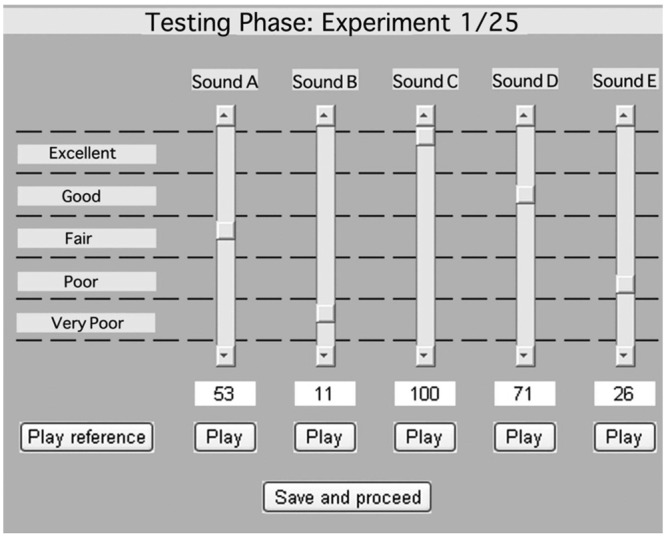Figure 2.

Screenshot of the CI-MUSHRA (Cochlear Implant-MUltiple Stimulus With Hidden Reference and Anchor) computer interface
Note: For each trial, participants are presented with the labeled reference (unaltered musical stimulus; marked “Play Reference”) and five sound quality versions of the reference in random order (8-, 4-, 2-kHz LPF [low-pass-filtered] versions, the anchor, and hidden reference; marked as “Sounds A-E”). Participants can listen to each of these versions without limit by pressing “Play.” To rate a stimulus, participants move the adjustable sliders between 0 and 100. Participants must rate at least one stimulus in the set a score of “100” (i.e., identical sound quality to the labeled reference). Once participants are satisfied with their ratings, they can press “Save and proceed” to move to the next trial. (Note that this figure differs from the figure in Roy, Jiradejvong, Carver, and Limb [2012] in that this interface has fewer sound quality versions per trial to allow for a shorter test paradigm.)
